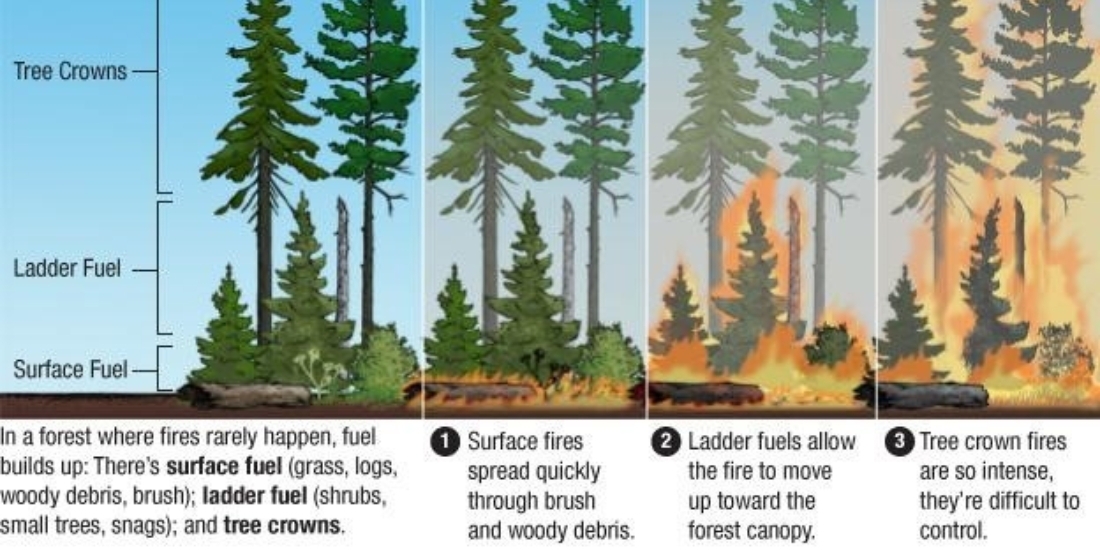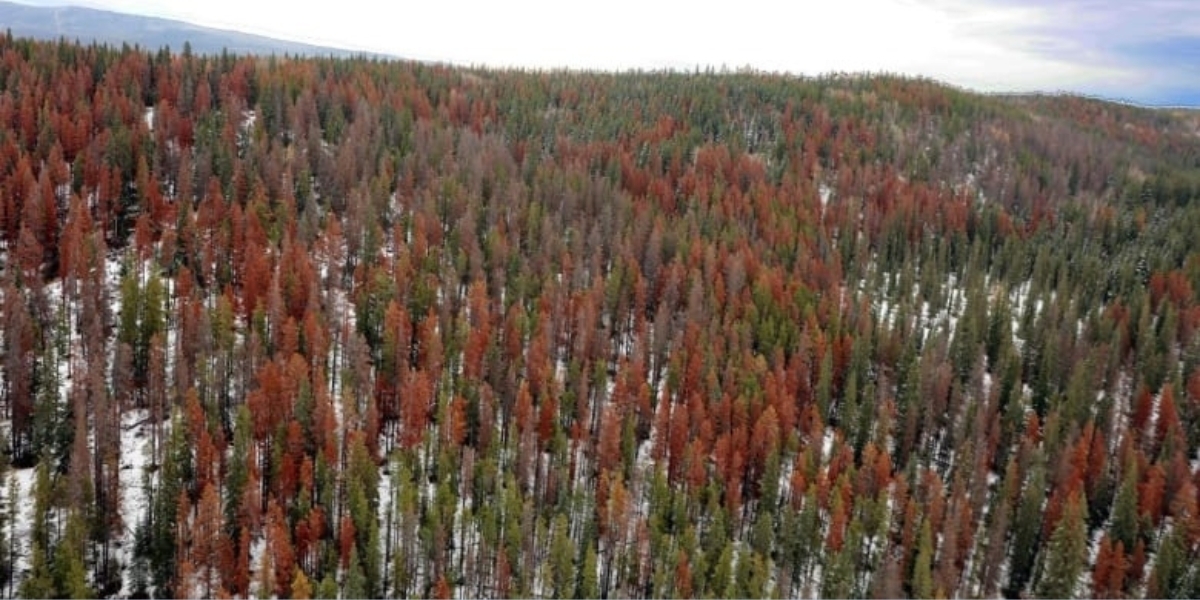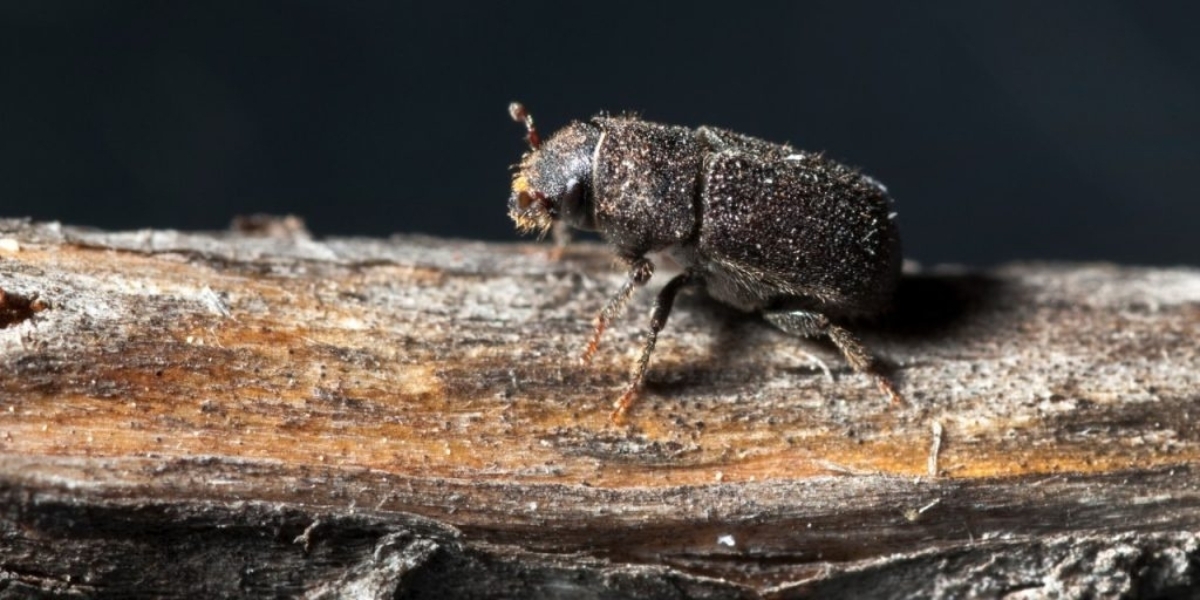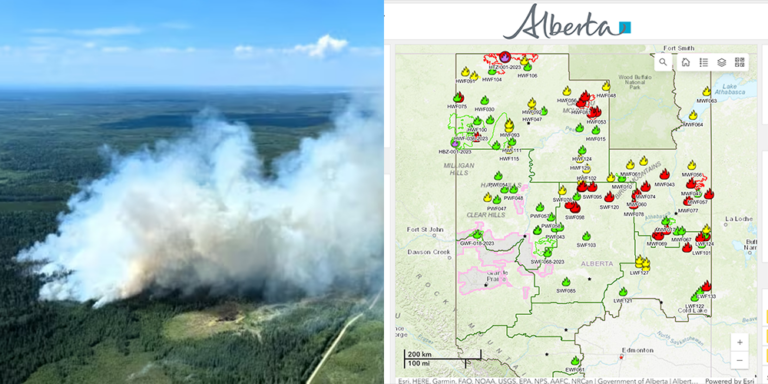Parks Canada has been giving the forests in Banff National Park a little trim. It’s called thinning and is commonly used as a tool to manage forests.
Thinning is a method to promote the growth of healthy trees by removing slow-growing and weak trees. Think of it like cutting your hair. If you want to grow beautiful locks, you need to trim your dead ends.
Thinning also reduces the risk of wildfires in areas like Banff by removing smaller trees. This prevents fires on the forest floor from using smaller trees to climb into the tree canopy.
“What that (thinning) involves is pruning the forest so we can reduce the amount of fuel load in terms of wildfire risk reduction,” David Tavernini, Fire and Vegetation Specialist with Parks Canada, told Global News.


But a certain winged menace has made Parks Canada’s job especially difficult—the mountain pine beetle. The Parks Service has been at war since these beetles were first observed in the early 1990s.
To us, mountain pine beetles aren’t any more impressive than your run-of-the-mill beetle. But for trees, this creepy crawly is a death sentence.
Mountain pine beetles are wood-boring insects native to North America. Wood-boring insects are harmful because they tunnel and feed into the living wood of a tree, which can kill it.
Mountain pine beetles essentially eat a tree from the inside out. Normally, a tree’s natural defences can handle a small population of mountain pine beetles.
But the mountain pine beetle population has grown incredibly fast in recent years. These beetles now use a power-in-numbers strategy to coordinate mass attacks and overwhelm a tree’s natural defences.


If that wasn’t bad enough, when mountain pine beetles kill these trees, they are more likely to catch fire.
“There’s been a long-standing question of do these mountain pine beetle outbreaks actually lead to higher incidents of fires, but also a higher severity of fires — and some preliminary findings show yes that they do,” Chris Bone, an associate professor at the University of Victoria studying pine beetles, told Global News.
There’s no way to eliminate mountain pine beetles, but they can be managed. Alberta’s Mountain Pine Beetle Management Strategy (MPBMS) aims to do just that.
The MPBMS’s two main objectives are to contain mountain pine beetle infestations and minimize their spread across Alberta. Parks Canada is now working with local and Indigenous contractors to do this better.
Alberta’s beautiful forests need to be protected. Hopefully, the province’s MPBM will be able to turn the tides in our favour.






